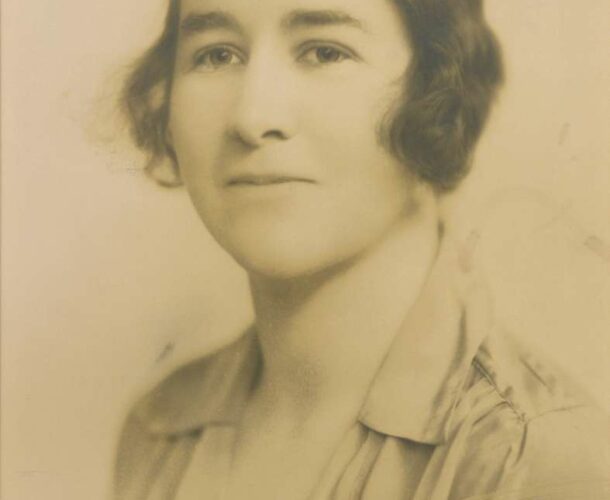In 1928 a fresh outbreak of the polio epidemic provoked intense public anxiety in Melbourne. Newspapers published running lists of the latest reported cases and recent deaths from infection.
Preventing the spread of the disease was seen as the holy grail of public health – a mission that medical scientist Dame Jean Macnamara prosecuted with zeal, the welfare of children her guiding light.
She was described as short and plump, “rather shabbily dressed, quick-witted and blunt in manner.” She rolled her own and had a smoker’s cough. Though raised in her mother’s Presbyterian faith, according to the Australian Dictionary of Biography, “it was probably from her Catholic father, impetuous and forthright, that she inherited her determined spirit.”
Fighting polio
By the time of the epidemic in the late 1920s, Dr Macnamara was well positioned to respond in the laboratory. A high-achiever from the age of 15, she had graduated from the University of Melbourne in 1922, a brilliant year that included Sir Frank Macfarlane Burnet and fellow Walter and Eliza Hall Institute researcher Dr Lucy Bryce. After completing her residency at the then Children’s Hospital, she was consultant to the Poliomyelitis Committee of Victoria led by Dr John Dale and was poised to be an honorary advisor on polio to authorities in three states.
She became convinced that polio could be treated in its pre-paralytic stage by an immune serum extracted from patients who had recovered from the disease. While prominent US scientists cast doubt on the efficacy of the treatment, she published and defended her results in prestigious Australian and British journals.
Injecting immunity
Burnet agreed to collaborate with Macnamara to see if the convalescent serum would be effective against the latest outbreak – and it was this work that gave rise to a major discovery. While carrying out experiments at the institute, Burnet thought it might be interesting to compare the Melbourne strain of the virus with a virulent strain obtained from the Rockefeller Institute, called MV.
Two laboratory monkeys had each recovered from paralysis from one of the strains. But once tested with the other strain, both animals were again struck down with polio— this time fatally. That the two strains did not cross immunise showed there was more than one type of polio virus. The finding has been acknowledged as an early step towards the development of the Salk vaccine.
Treating childhood disease
Yet Macnamara’s conflict with parts of the scientific fraternity, including “John Dale and his crew”, about the immune serum therapy had a bruising impact. Though she continued to work part-time at the institute, she shifted her focus to orthopaedics. While overseas on a Rockefeller scholarship during the early 30s, she met President Roosevelt, ordered Australia’s first artificial respirator and devised a method for rehabilitating polio victims – splinting the paralysed body part until the nerve damage recovers and re-educating muscles.
During the polio epidemic in 1937 she worked tirelessly in private practice and at the Children’s and Fairfield hospitals. A year later she established a treatment clinic at Carlton where 30 children were treated daily, driven there and back, and given a hot lunch.
Eradicating rabbits
Though her orthopaedic expertise was in demand across the country, Macnamara — a committed environmentalist — found time to tackle the threat posed by rabbits, which were laying waste to what she described as “the children’s inheritance.” While in America she learned about the virus myxomatosis that killed rabbits and this gave her the idea of deploying the disease in Australia to eradicate the pest.
She spared no egos in prosecuting the cause, her efforts leading to field trials that vindicated the “conspicuous gadfly” and earned accolades from woolgrowers.
She continued to treat paralysis victims until her own death in 1968. Her funeral reportedly resembled a scene from Lourdes.



